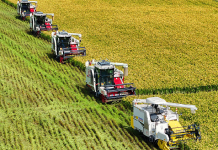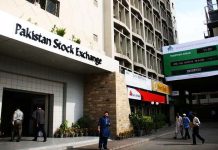ISLAMABAD: Pakistan Railways (PR) is one of the country’s most discussed state-owned enterprises (SOEs) for experiencing repeated annual losses running into billions of rupees, and widespread dissatisfaction with its performance.
However, as the most economical mode of transportation of goods and commuting, it has been the central point of Pakistan’s industrial and commercial development, a symbol of national unity, and a vehicle of socio-political integration. The geographical outlines of Pakistan make it an excellent and cheapest mode of transportation for long-distance freight movement.
Talking to WealthPk, Dr. Karim Khan, Associate Professor of Pakistan Institute of Development Economics (PIDE), said, “Over the last few decades, PR has not been on track because of multi-faceted challenges of poor governance, political interference, corruption, inadequate human capital, poor infrastructure, and huge deficits which are preventing it from becoming a well-functioning and optimally utilized organization.”
Moreover, running passenger trains on uneconomical routes, limited capacity to run freight trains, lack of commercial exploitation of railways land, heavy pension liabilities, and federalism are also some of the factors pulling the PR downward. Besides, the growing share of investment in road infrastructure and continued low investment in the railway sector have hurt the financial position of Pakistan Railways overall, he added.
Talking to WealthPK, Saddam Hussein, Research Economist at PIDE, said, “The CPEC early harvest plan of overhauling the 1,687 kilometre Main Line 1 railway (ML-1) between Karachi and Peshawar and a similar major upgrade of 1,254 kilometre ML-2 railway between Kotri in Sindh and Attock in northern Punjab province via the cities of Larkana and D G Khan are mega projects’, which cover the key arteries of the country. Besides that, medium-term plans for ML-3 will also include construction of a 560 kilometre railway line between Bostan near Quetta to Kotla Jam in Bhakkat District near the city of DI Khan, which will also provide access to southern Afghanistan. This railway route will pass through Quetta and Zhob before terminating at Kotla Jam and is expected to be constructed by 2025”.
“Lastly, under the umbrella of CPEC, Havelian to Khunjerab, a new railway link of 682 kilometres, will also play a pivotal role in the railway sector. The project is expected to be completed by 2030. So, the stage is pretty much ready to take a big leap forward. Though it would be naive to consider these projects as a nosh from heaven and that they would operate on their own. Not to forget, we had British Railways in the sub-continent, one of the greatest projects of the times, yet what we did to that railway is quite evident. So, good governance is the key. Without it, the best of the best project is also destined to get doomed soon,” he added.
Way Forward:
“Transport sector, especially rail, plays a vital role in any country’s socio-economic development. An analysis of the situational aspects of Pakistan Railways shows that it has suffered a series of losses in recent decades. In addition, poor infrastructure and low service standards have contributed to the deterioration of railroad. Therefore, to improve the PR’s performance, the authorities concerned should encourage public-private partnership, particularly in the advancement of existing and new infrastructure. Publicity can also attract the public to railways. Finally, and most importantly, the PR needs to engage its officials in more commercial deals with different industries to increase revenue,” Dr. Karim Khan said.
INP





